Answered step by step
Verified Expert Solution
Question
1 Approved Answer
1) Task 2 Main Assignment Read this case and answer the questions that follow: CASE STUDY: AIRTEL - POSITIONING (AND REPOSITIONING): FROM 'TOUCH TOMORROW' TO
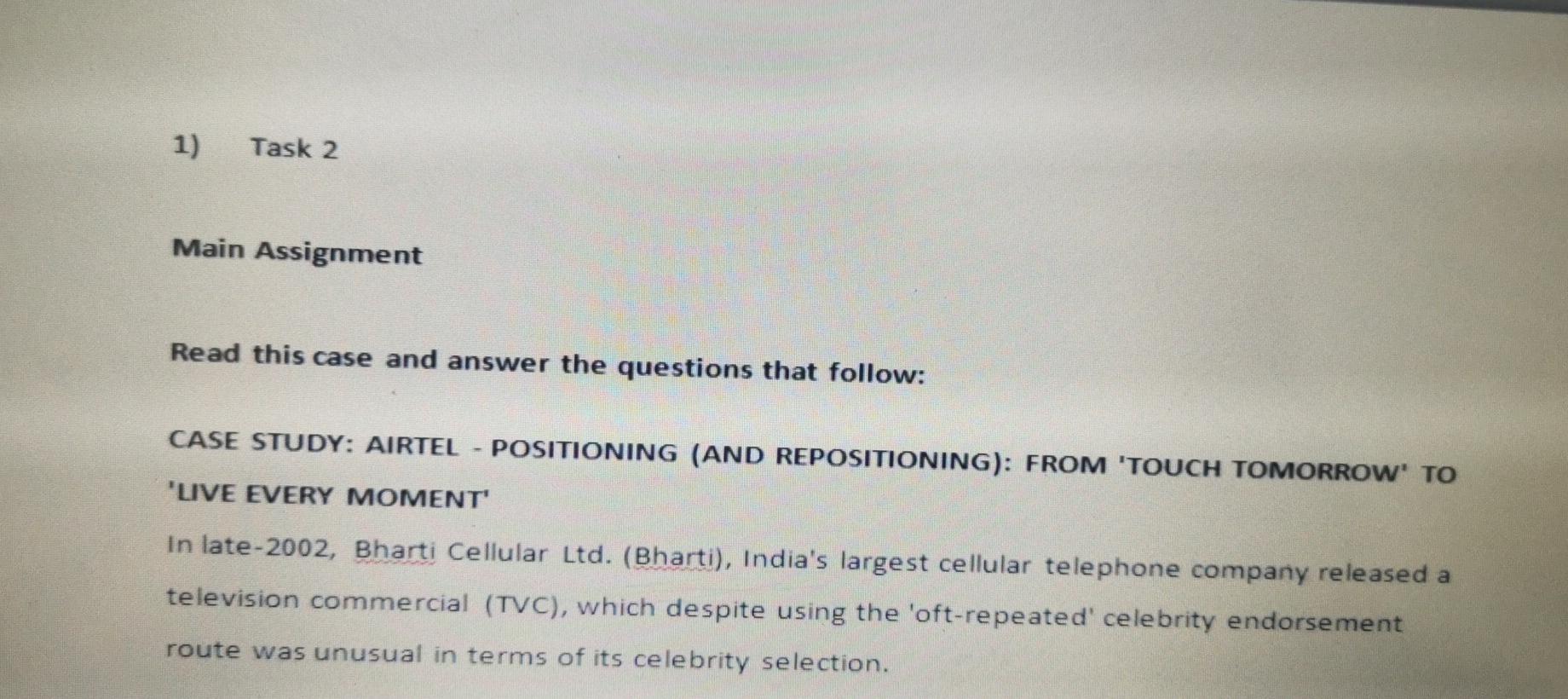
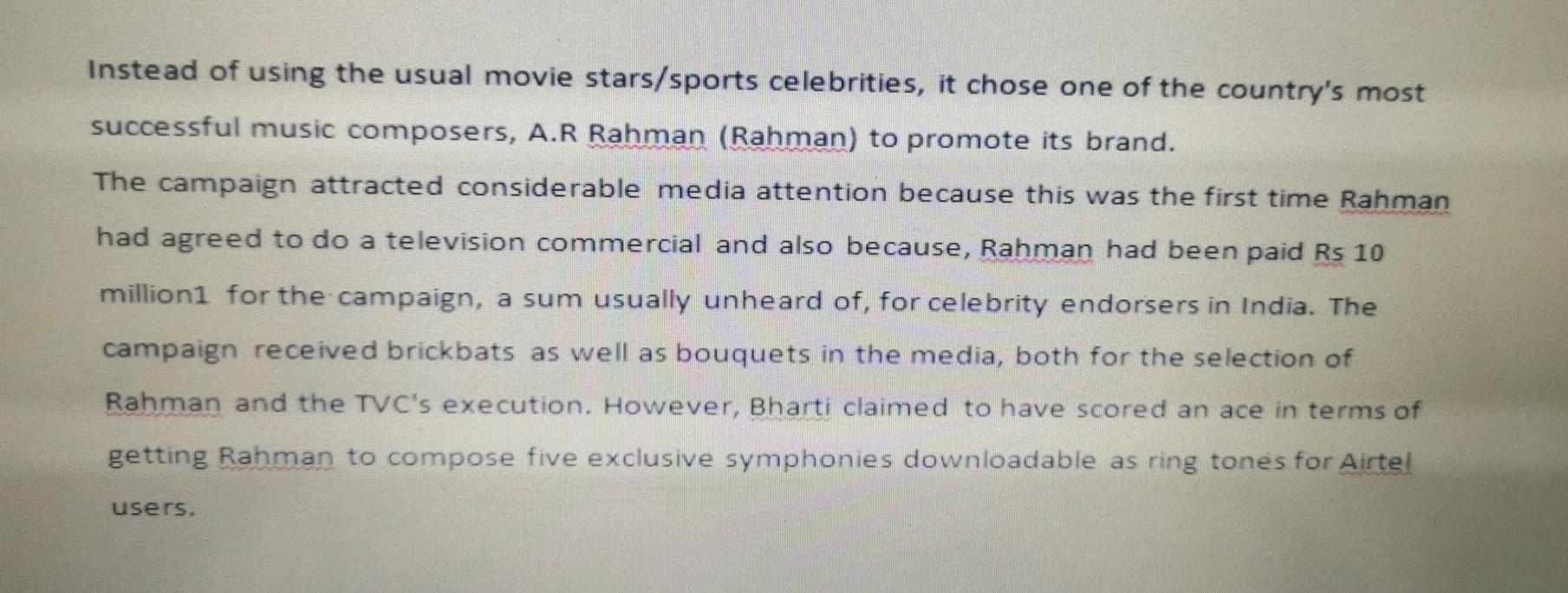

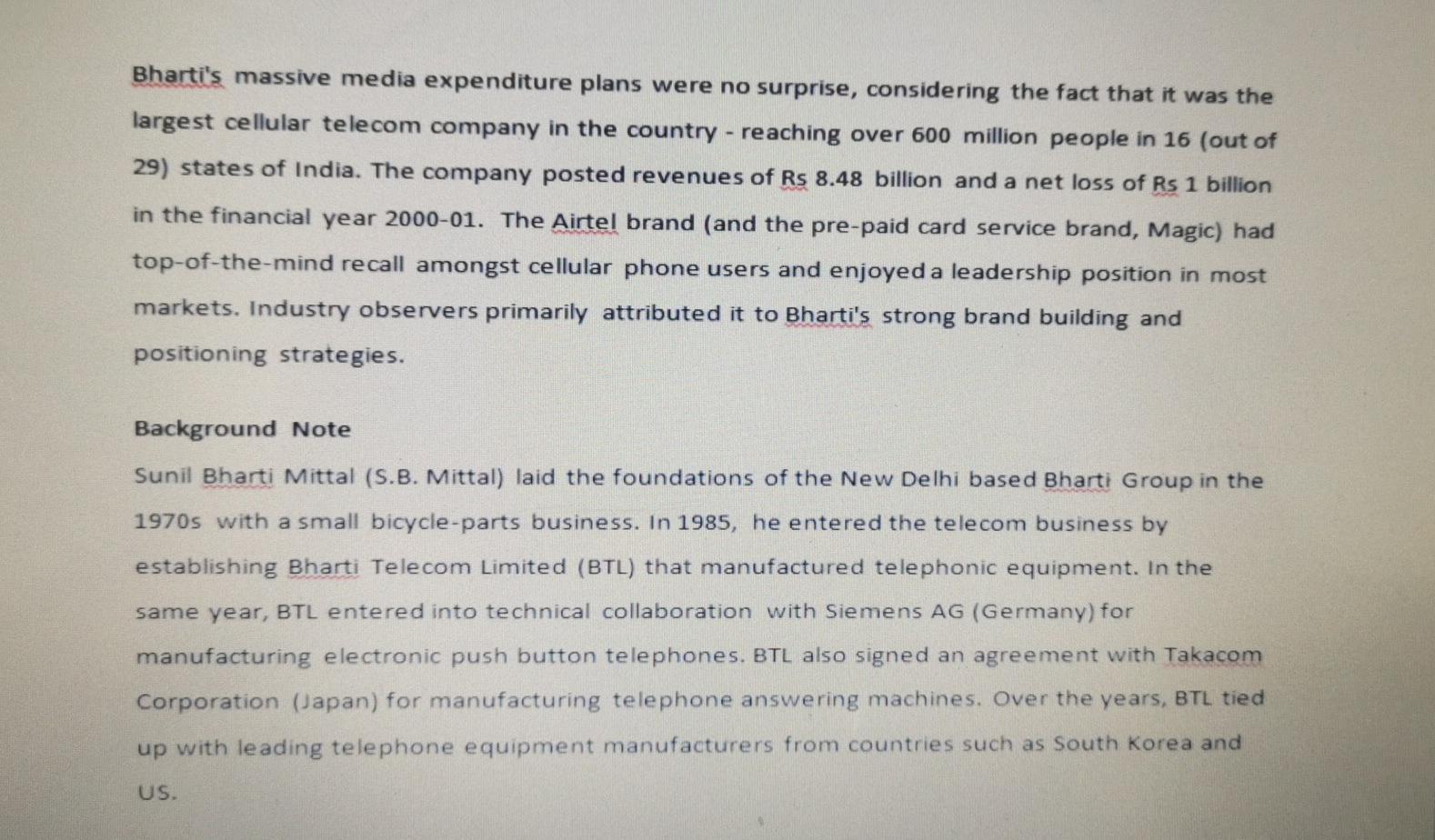
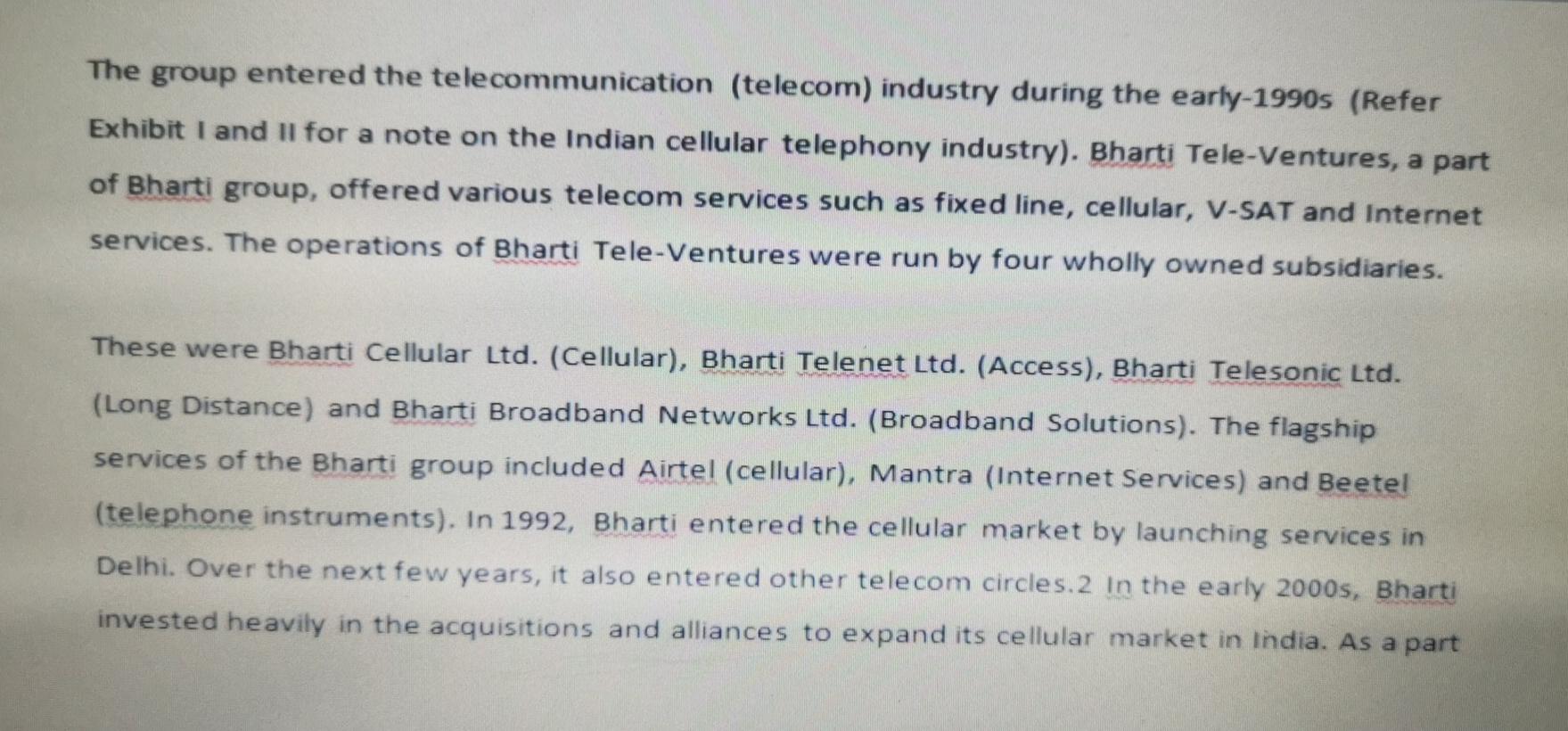
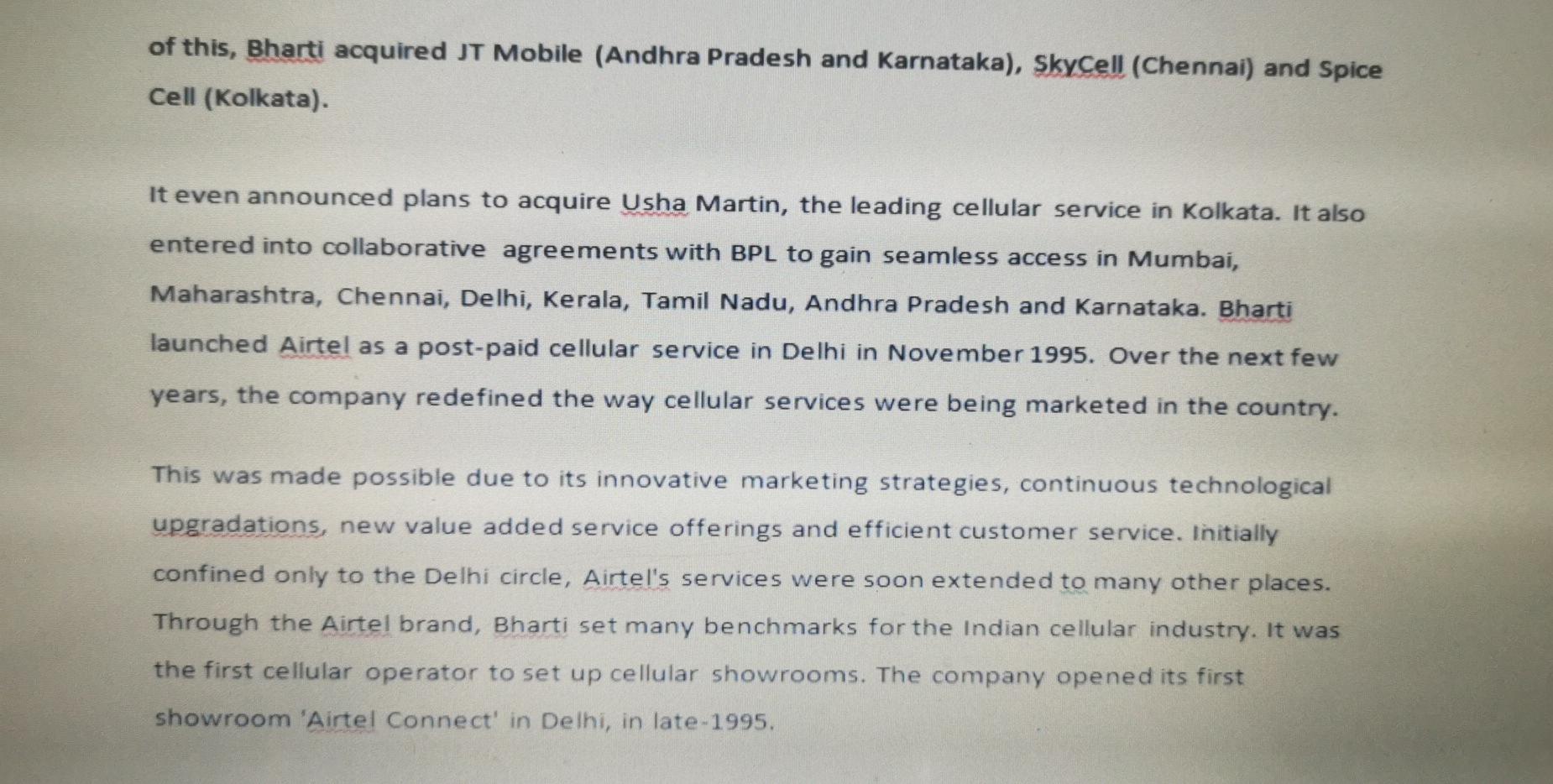
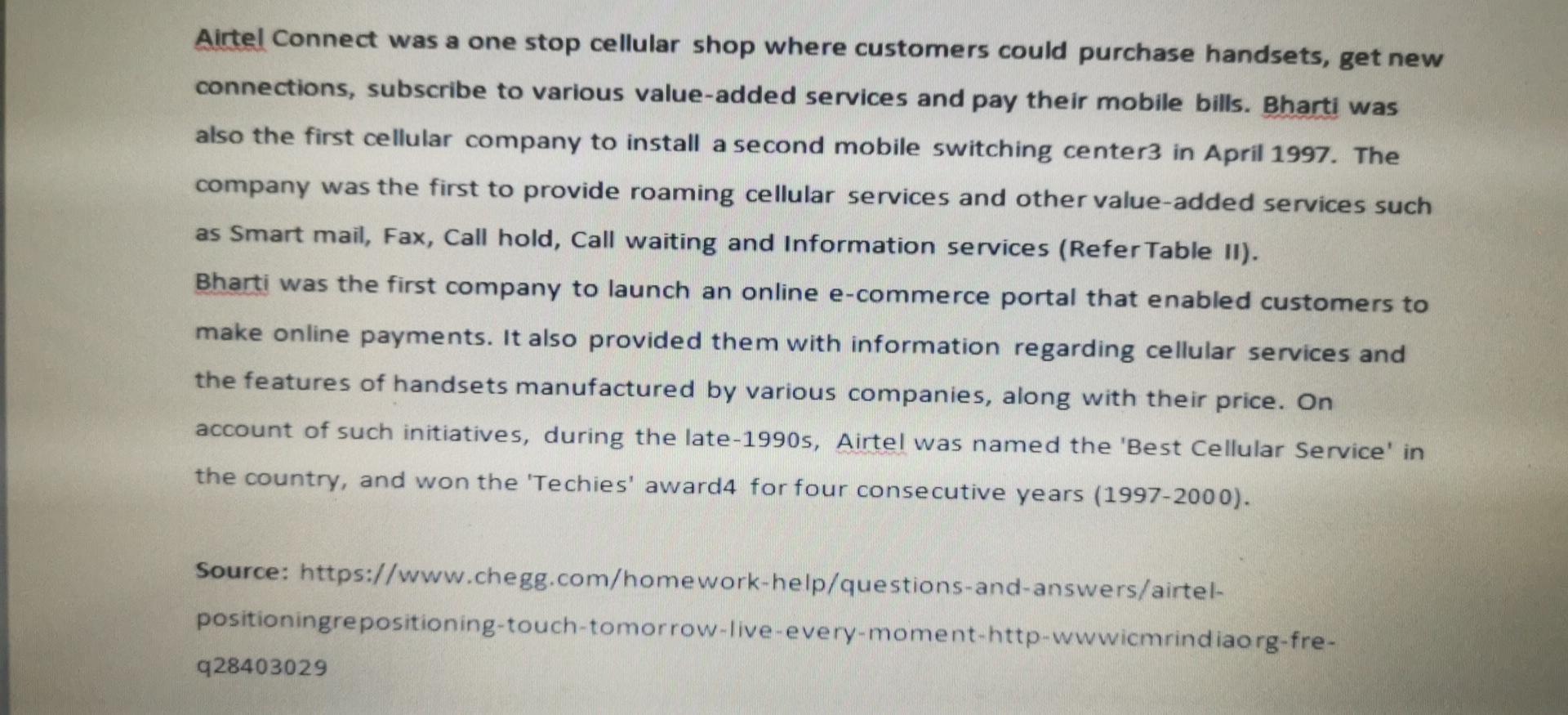
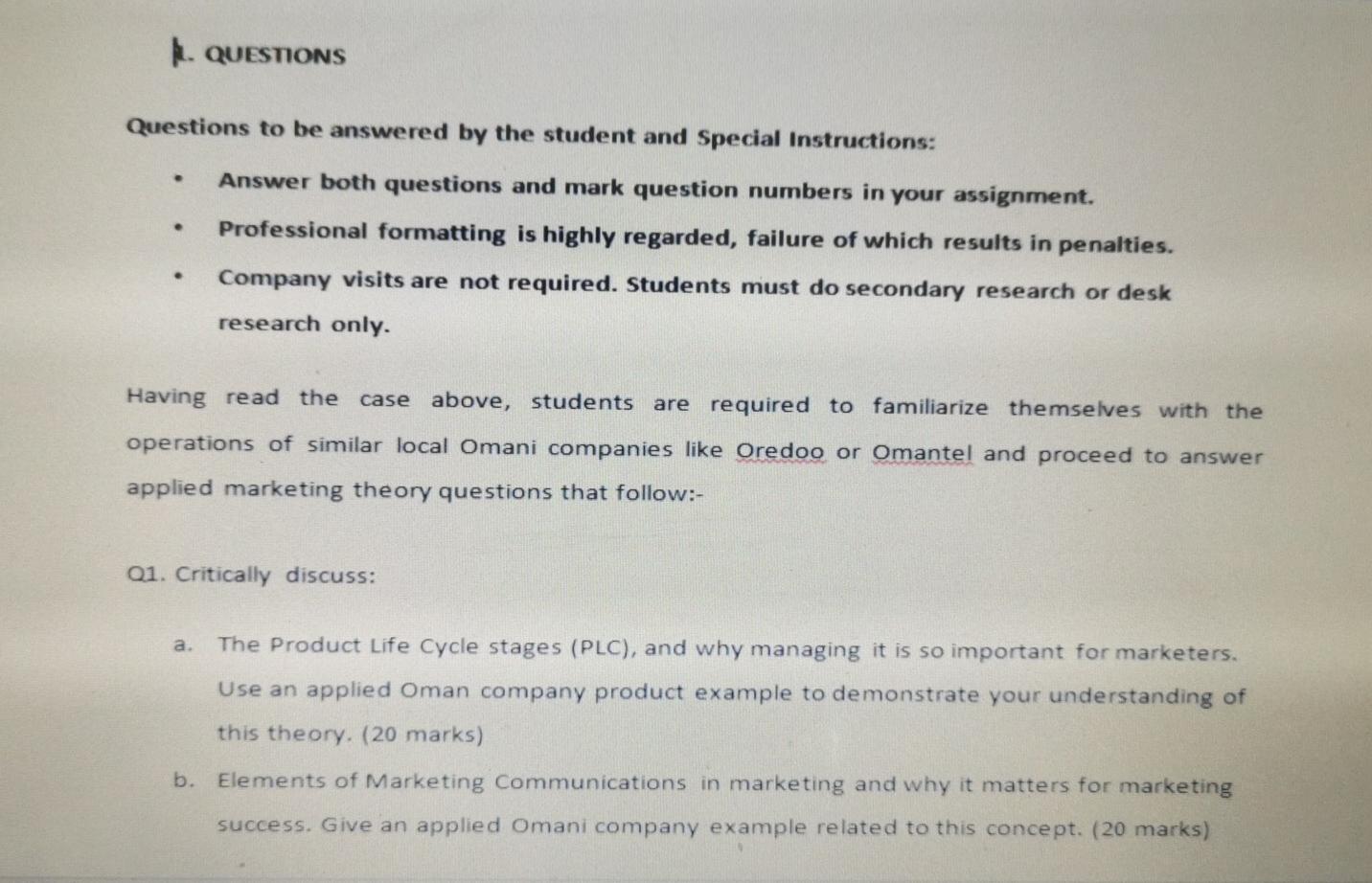
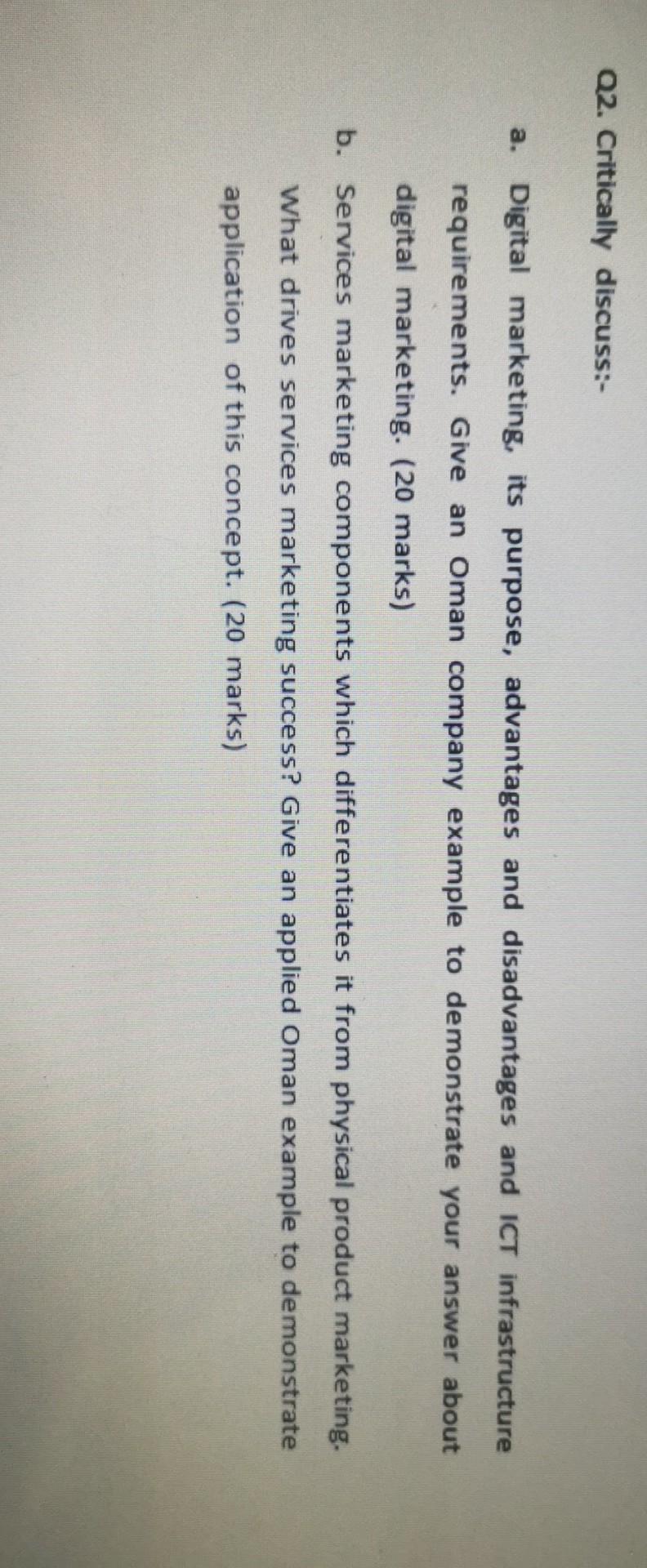
1) Task 2 Main Assignment Read this case and answer the questions that follow: CASE STUDY: AIRTEL - POSITIONING (AND REPOSITIONING): FROM 'TOUCH TOMORROW' TO "LIVE EVERY MOMENT In late-2002, Bharti Cellular Ltd. (Bharti), India's largest cellular telephone company released a television commercial (TVC), which despite using the 'oft-repeated' celebrity endorsement route was unusual in terms of its celebrity selection. Instead of using the usual movie stars/sports celebrities, it chose one of the country's most successful music composers, A.R Rahman (Rahman) to promote its brand. The campaign attracted considerable media attention because this was the first time Rahman had agreed to do a television commercial and also because, Rahman had been paid Rs 10 millioni for the campaign, a sum usually unheard of, for celebrity endorsers in India. The campaign received brickbats as well as bouquets in the media, both for the selection of Rahman and the TVC's execution. However, Bharti claimed to have scored an ace in terms of getting Rahman to compose five exclusive symphonies downloadable as ring tones for Airtel users. The TVC was a part of the brand repositioning and restructuring efforts for Airtel, as part of which, Bharti changed the brand's tagline in early-2002 from 'Touch Tomorrow' to 'Live Every Moment.' The company also decided to undertake a comprehensive brand building program for the company and chose the slogan 'Unlimited Freedom' for the same. Commenting on these changes, company sources said, "Airtel's brand identity and campaign will now have a new younger and international look and feel that builds on the earlier positioning." Bharti's massive media expenditure plans were no surprise, considering the fact that it was the largest cellular telecom company in the country - reaching over 600 million people in 16 (out of 29) states of India. The company posted revenues of Rs 8.48 billion and a net loss of Rs 1 billion in the financial year 2000-01. The Airtel brand (and the pre-paid card service brand, Magic) had top-of-the-mind recall amongst cellular phone users and enjoyed a leadership position in most markets. Industry observers primarily attributed it to Bharti's strong brand building and positioning strategies. Background Note Sunil Bharti Mittal (S.B. Mittal) laid the foundations of the New Delhi based Bharti Group in the 1970s with a small bicycle-parts business. In 1985, he entered the telecom business by establishing Bharti Telecom Limited (BTL) that manufactured telephonic equipment. In the same year, BTL entered into technical collaboration with Siemens AG (Germany) for manufacturing electronic push button telephones. BTL also signed an agreement with Takacom Corporation (Japan) for manufacturing telephone answering machines. Over the years, BTL tied up with leading telephone equipment manufacturers from countries such as South Korea and US. The group entered the telecommunication (telecom) industry during the early-1990s (Refer Exhibit I and Il for a note on the Indian cellular telephony industry). Bharti Tele-Ventures, a part of Bharti group, offered various telecom services such as fixed line, cellular, V-SAT and Internet services. The operations of Bharti Tele-Ventures were run by four wholly owned subsidiaries. These were Bharti Cellular Ltd. (Cellular), Bharti Telenet Ltd. (Access), Bharti Telesonic Ltd. (Long Distance) and Bharti Broadband Networks Ltd. (Broadband Solutions). The flagship services of the Bharti group included Airtel (cellular), Mantra (Internet Services) and Beetel (telephone instruments). In 1992, Bharti entered the cellular market by launching services in Delhi. Over the next few years, it also entered other telecom circles. 2 In the early 2000s, Bharti invested heavily in the acquisitions and alliances to expand its cellular market in India. As a part of this, Bharti acquired JT Mobile (Andhra Pradesh and Karnataka), SkyCell (Chennai) and Spice Cell (Kolkata). It even announced plans to acquire Usha Martin, the leading cellular service in Kolkata. It also entered into collaborative agreements with BPL to gain seamless access in Mumbai, Maharashtra, Chennai, Delhi, Kerala, Tamil Nadu, Andhra Pradesh and Karnataka. Bharti launched Airtel as a post-paid cellular service in Delhi in November 1995. Over the next few years, the company redefined the way cellular services were being marketed in the country. This was made possible due to its innovative marketing strategies, continuous technological upgradations, new value added service offerings and efficient customer service. Initially confined only to the Delhi circle, Airtel's services were soon extended to many other places. Through the Airtel brand, Bharti set many benchmarks for the Indian cellular industry. It was the first cellular operator to set up cellular showrooms. The company opened its first showroom 'Airtel Connect' in Delhi, in late-1995. Airtel Connect was a one stop cellular shop where customers could purchase handsets, get new connections, subscribe to various value-added services and pay their mobile bills. Bharti was also the first cellular company to install a second mobile switching center3 in April 1997. The company was the first to provide roaming cellular services and other value-added services such as Smart mail, Fax, Call hold, Call waiting and Information services (Refer Table II). Bharti was the first company to launch an online e-commerce portal that enabled customers to make online payments. It also provided them with information regarding cellular services and the features of handsets manufactured by various companies, along with their price. On account of such initiatives, during the late 1990s, Airtel was named the 'Best Cellular Service' in the country, and won the 'Techies' award4 for four consecutive years (1997-2000). Source: https://www.chegg.com/homework-help/questions-and-answers/airtel- positioningre positioning-touch-tomorrow-live-every-moment-http-wwwicmrindiaorg-fre- 928403029 1. QUESTIONS Questions to be answered by the student and Special Instructions: Answer both questions and mark question numbers in your assignment. Professional formatting is highly regarded, failure of which results in penalties. Company visits are not required. Students must do secondary research or desk research only. Having read the case above, students are required to familiarize themselves with the operations of similar local Omani companies like Oredoo or Omantel and proceed to answer applied marketing theory questions that follow:- 01. Critically discuss: a. The Product Life Cycle stages (PLC), and why managing it is so important for marketers. Use an applied Oman company product example to demonstrate your understanding of this theory. (20 marks) b. Elements of Marketing Communications in marketing and why it matters for marketing success. Give an applied Omani company example related to this concept. (20 marks) Q2. Critically discuss:- a. Digital marketing, its purpose, advantages and disadvantages and ICT infrastructure requirements. Give an Oman company example to demonstrate your answer about digital marketing. (20 marks) b. Services marketing components which differentiates it from physical product marketing. What drives services marketing success? Give an applied Oman example to demonstrate application of this concept. (20 marks) 1) Task 2 Main Assignment Read this case and answer the questions that follow: CASE STUDY: AIRTEL - POSITIONING (AND REPOSITIONING): FROM 'TOUCH TOMORROW' TO "LIVE EVERY MOMENT In late-2002, Bharti Cellular Ltd. (Bharti), India's largest cellular telephone company released a television commercial (TVC), which despite using the 'oft-repeated' celebrity endorsement route was unusual in terms of its celebrity selection. Instead of using the usual movie stars/sports celebrities, it chose one of the country's most successful music composers, A.R Rahman (Rahman) to promote its brand. The campaign attracted considerable media attention because this was the first time Rahman had agreed to do a television commercial and also because, Rahman had been paid Rs 10 millioni for the campaign, a sum usually unheard of, for celebrity endorsers in India. The campaign received brickbats as well as bouquets in the media, both for the selection of Rahman and the TVC's execution. However, Bharti claimed to have scored an ace in terms of getting Rahman to compose five exclusive symphonies downloadable as ring tones for Airtel users. The TVC was a part of the brand repositioning and restructuring efforts for Airtel, as part of which, Bharti changed the brand's tagline in early-2002 from 'Touch Tomorrow' to 'Live Every Moment.' The company also decided to undertake a comprehensive brand building program for the company and chose the slogan 'Unlimited Freedom' for the same. Commenting on these changes, company sources said, "Airtel's brand identity and campaign will now have a new younger and international look and feel that builds on the earlier positioning." Bharti's massive media expenditure plans were no surprise, considering the fact that it was the largest cellular telecom company in the country - reaching over 600 million people in 16 (out of 29) states of India. The company posted revenues of Rs 8.48 billion and a net loss of Rs 1 billion in the financial year 2000-01. The Airtel brand (and the pre-paid card service brand, Magic) had top-of-the-mind recall amongst cellular phone users and enjoyed a leadership position in most markets. Industry observers primarily attributed it to Bharti's strong brand building and positioning strategies. Background Note Sunil Bharti Mittal (S.B. Mittal) laid the foundations of the New Delhi based Bharti Group in the 1970s with a small bicycle-parts business. In 1985, he entered the telecom business by establishing Bharti Telecom Limited (BTL) that manufactured telephonic equipment. In the same year, BTL entered into technical collaboration with Siemens AG (Germany) for manufacturing electronic push button telephones. BTL also signed an agreement with Takacom Corporation (Japan) for manufacturing telephone answering machines. Over the years, BTL tied up with leading telephone equipment manufacturers from countries such as South Korea and US. The group entered the telecommunication (telecom) industry during the early-1990s (Refer Exhibit I and Il for a note on the Indian cellular telephony industry). Bharti Tele-Ventures, a part of Bharti group, offered various telecom services such as fixed line, cellular, V-SAT and Internet services. The operations of Bharti Tele-Ventures were run by four wholly owned subsidiaries. These were Bharti Cellular Ltd. (Cellular), Bharti Telenet Ltd. (Access), Bharti Telesonic Ltd. (Long Distance) and Bharti Broadband Networks Ltd. (Broadband Solutions). The flagship services of the Bharti group included Airtel (cellular), Mantra (Internet Services) and Beetel (telephone instruments). In 1992, Bharti entered the cellular market by launching services in Delhi. Over the next few years, it also entered other telecom circles. 2 In the early 2000s, Bharti invested heavily in the acquisitions and alliances to expand its cellular market in India. As a part of this, Bharti acquired JT Mobile (Andhra Pradesh and Karnataka), SkyCell (Chennai) and Spice Cell (Kolkata). It even announced plans to acquire Usha Martin, the leading cellular service in Kolkata. It also entered into collaborative agreements with BPL to gain seamless access in Mumbai, Maharashtra, Chennai, Delhi, Kerala, Tamil Nadu, Andhra Pradesh and Karnataka. Bharti launched Airtel as a post-paid cellular service in Delhi in November 1995. Over the next few years, the company redefined the way cellular services were being marketed in the country. This was made possible due to its innovative marketing strategies, continuous technological upgradations, new value added service offerings and efficient customer service. Initially confined only to the Delhi circle, Airtel's services were soon extended to many other places. Through the Airtel brand, Bharti set many benchmarks for the Indian cellular industry. It was the first cellular operator to set up cellular showrooms. The company opened its first showroom 'Airtel Connect' in Delhi, in late-1995. Airtel Connect was a one stop cellular shop where customers could purchase handsets, get new connections, subscribe to various value-added services and pay their mobile bills. Bharti was also the first cellular company to install a second mobile switching center3 in April 1997. The company was the first to provide roaming cellular services and other value-added services such as Smart mail, Fax, Call hold, Call waiting and Information services (Refer Table II). Bharti was the first company to launch an online e-commerce portal that enabled customers to make online payments. It also provided them with information regarding cellular services and the features of handsets manufactured by various companies, along with their price. On account of such initiatives, during the late 1990s, Airtel was named the 'Best Cellular Service' in the country, and won the 'Techies' award4 for four consecutive years (1997-2000). Source: https://www.chegg.com/homework-help/questions-and-answers/airtel- positioningre positioning-touch-tomorrow-live-every-moment-http-wwwicmrindiaorg-fre- 928403029 1. QUESTIONS Questions to be answered by the student and Special Instructions: Answer both questions and mark question numbers in your assignment. Professional formatting is highly regarded, failure of which results in penalties. Company visits are not required. Students must do secondary research or desk research only. Having read the case above, students are required to familiarize themselves with the operations of similar local Omani companies like Oredoo or Omantel and proceed to answer applied marketing theory questions that follow:- 01. Critically discuss: a. The Product Life Cycle stages (PLC), and why managing it is so important for marketers. Use an applied Oman company product example to demonstrate your understanding of this theory. (20 marks) b. Elements of Marketing Communications in marketing and why it matters for marketing success. Give an applied Omani company example related to this concept. (20 marks) Q2. Critically discuss:- a. Digital marketing, its purpose, advantages and disadvantages and ICT infrastructure requirements. Give an Oman company example to demonstrate your answer about digital marketing. (20 marks) b. Services marketing components which differentiates it from physical product marketing. What drives services marketing success? Give an applied Oman example to demonstrate application of this concept. (20 marks)
Step by Step Solution
There are 3 Steps involved in it
Step: 1

Get Instant Access to Expert-Tailored Solutions
See step-by-step solutions with expert insights and AI powered tools for academic success
Step: 2

Step: 3

Ace Your Homework with AI
Get the answers you need in no time with our AI-driven, step-by-step assistance
Get Started


